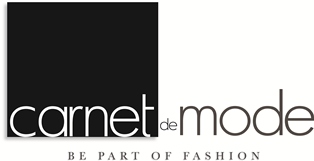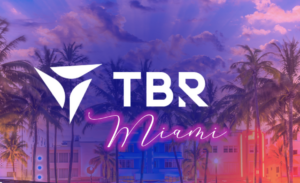 A Q&A with imonomy co-founder Oren Dror. The Ramat Gan, Israel–based company, which offers a service that automatically inserts copyright-free images into websites based on relevant content, closed a $400,000 Seed funding round in late May. Investors are Angels that include Inon Axel, former CEO of Kasamba and now imonomy’s active chairman; Liron Rose, co-founder of AfterDownload; and Itai Levitan and Tal Shaked, partners at AfterDownload.
A Q&A with imonomy co-founder Oren Dror. The Ramat Gan, Israel–based company, which offers a service that automatically inserts copyright-free images into websites based on relevant content, closed a $400,000 Seed funding round in late May. Investors are Angels that include Inon Axel, former CEO of Kasamba and now imonomy’s active chairman; Liron Rose, co-founder of AfterDownload; and Itai Levitan and Tal Shaked, partners at AfterDownload.
SUB: Please describe imonomy and your value proposition.
Dror: imonomy is an Israeli-based start-up company. We have developed the first Visual Semantic Engine, which is able to scan the text from web pages and automatically find the most suitable, high-quality, copyright-free image to accompany the content.
Our focus when developing imonomy’s software was to provide an easy-to-use, free, all-in-one solution for publishers looking to add images, and a new source of income. Our application improves the aesthetic appeal of websites, while ensuring better user-engagement. Through providing copyright-free images, imonomy increases page views, and improves bounce rates. Publishers worldwide are able to begin using imonomy by clicking the ‘Get Started’ button on our website, which leads them step-by-step through a quick-and-easy integration process.
SUB: Who are your target markets and users?
Dror: We knew from the very beginning that the key to building a successful company would be to make imonomy accessible to everyone. We believe that blogs can benefit from imonomy’s technology by being able to improve their overall performance, in the same way that established websites can benefit from imonomy’s product. Ultimately, imonomy was developed in order to be able to cater to all types of publishers. imonomy has already been integrated onto big-name websites such as AOL Answers, and Article Base, as well as hundreds of other websites.
SUB: Who do you consider to be your competition?
Dror: imonomy entered into a market that was already densely populated with many content enrichment tools, as well as many monetization tools. imonomy, however, uniquely offers a tool that allows for both content enrichment and monetization.
SUB: What differentiates imonomy from the competition?
Dror: imonomy invented the world’s first ever Visual Semantic Engine, and is currently the only company using this breakthrough technology. While there are other companies that offer technology similar to that of imonomy’s, there is no other company that offers imonomy’s all-in-one solution, which combines content-enrichment and monetization.
SUB: When was the company founded and what were the first steps you took in establishing it?
Dror: In 2012 I founded imonomy together with Amit Halawa-Alon. imonomy’s content-enrichment and monetization platform was then launched shortly after we founded the company.
SUB: What was the inspiration behind the idea for imonomy? Was there an ‘aha’ moment, or was the idea more gradual in developing?
Dror: Amit and I started working together long before we founded imonomy. While working together, we learnt all of the ins and outs of the Internet world. After working very closely with many publishers and big websites, we began to understand the importance of visual elements on a web page. Over time, we started thinking about working together to develop a special engine that could read and recognize content on website pages. There was a need for an automated service that could save time and create improved user engagement. This need allowed the vision for imonomy to be recognized.
SUB: How did you come up with the name? What is the story behind it?
Dror: I often find myself reflecting on how the name ‘imonomy’ came to be. The first two letters of the company’s name were an inevitable choice in our eyes. ‘Im’ stands for ‘images,’ and given that imonomy’s technology focuses on providing copyright-free images to publishers, these two letters were an obvious choice to be at the beginning of our company’s name. The rest of the name came from simply throwing out names until something sounded right. After repeating ‘imonomy’ out loud several times, Amit and I knew we found a winner, with a company name that sounded cool, and catchy.
SUB: You recently raised $400,000 in Seed funding. Why was this a particularly good time to raise funding?
Dror: We need this funding to accelerate our growth, and further develop our product to make it even more accessible and appealing to publishers. We want imonomy to continue to improve, and grow, and our aim is to always stay a step ahead of the competition. All of our investors have entrepreneurial backgrounds, some of whom worked in areas very similar to what we are doing now, which has helped us a lot as we continue to build imonomy.
SUB: Do you have plans to raise more venture funding in the near future?
Dror: We are not planning to raise more venture funding in the near future. We want to build our company in a way that requires minimal funding. We see it as a great advantage that technology today allows companies to build viable products with relatively low investments or funding.
SUB: What have the most significant obstacles been so far to building the company?
Dror: We worked through a significant trial and error process when building our algorithm that automatically scans tens-of-millions of images to find the exact image that best suits a specific text. We certainly invested a lot of time and hard work in making our algorithmic engine as accurate as possible, so that we could truly feel proud to stand by our product.
SUB: How does the company generate revenue or plan to generate revenue?
Dror: imonomy’s technology has been intelligently created to insert advertisements as a secondary function to imonomy’s service. The advertisements are meant to target the publisher’s audience in a non-intrusive way. We share the revenue generated from these advertisements back with our publishers, and the share of revenue we keep is how imonomy generates its revenue.
SUB: What are your goals for imonomy over the next year or so?
Dror: Our goal is to establish imonomy as a key player in providing free images. We want imonomy to become a go-to name amongst website publishers, so our plan is to continue to develop our product to best suit every publisher’s needs. Ever since Amit and I founded imonomy in 2012, we have been growing quite steadily. Today, imonomy is a team of nine very talented individuals, and we hope that by this year’s end we will have a total of twenty employees working together with us.
imonomy – www.imonomy.com











